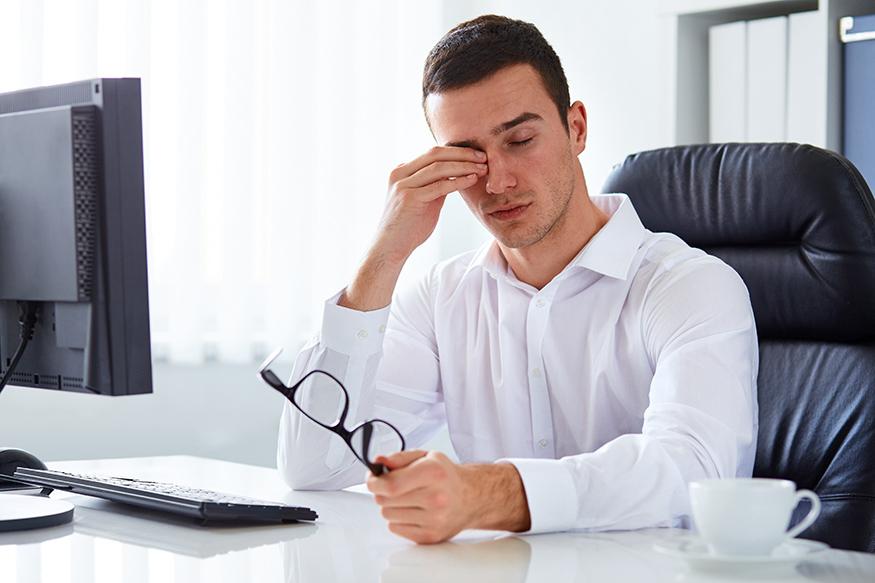
Smartphones, computer screens, ebook readers, smartwatches. On average, Americans own 4 digital devices and spend 60 hours a week accessing content on them, according to a 2014 study conducted by The Nielsen Company.
The prolonged, everyday use can lead to digital eye fatigue, the ocular discomfort and visual disturbance that occurs after 2 or more hours of digital device use. The most common and bothersome symptoms of digital eye fatigue are tiredness and dryness.1
Nearly 70% of adults in the United States report experiencing symptoms of digital eye strain.2 Adults in their 20s are the hardest hit, with 73% of them reporting symptoms.3
Tiredness and dryness
Although the number of hours a person spends using digital devices certainly plays a role (30% of American adults spend more than 9 hours a day using digital devices!3), the types of screens and switching among devices may also pose problems for many users. For instance, reflections and glare may cause users to squint or partially close their eyes to reduce the discomfort.
Glare, reflections, and luminance variations lead to blinking issues that ultimately contribute to tear instability and dry eyes. Evidence shows that concentrated computer screen use results in reduced blink rates, disrupting the normal distribution of tears and increasing corneal exposure.4
But it’s not just the number of blinks that matter. The completeness of those blinks also affects tear stability. Inadequate blinking not only fails to coat the ocular surface sufficiently, but it may also reduce visual acuity and cause blurred vision.4
Contact lens wearers feel this dryness more acutely than spectacle wearers.3 Up to 85% of contact lens wearers using digital devices experience at least one dryness-related symptom, compared with 71% of non-wearers.2
Because 90% of patients don’t talk to their eye care professional about the ocular discomfort they experience from using digital devices, many may assume that nothing can be done about it. Now is the time to start a dialogue with patients. Some important lifestyle questions to ask are:
- What types of digital devices (smartphone, tablet, laptop, etc.) do you use?
- How many hours a day do you use your digital devices?
- How do your eyes feel after looking at digital devices for long periods of time or after a long day of using digital devices?
Some eye care professionals are addressing digital eye fatigue by offering behavioural advice, such as blinking more frequently, taking regular short breaks from the digital screen to look at distance objects (the 20/20/20 rule), increasing the size of digital text, or adjusting the distance from their workstation. However, this type of advice seems to have limited success because of the potential impracticality in many situations or patient forgetfulness.
Some ECPs are offering product recommendations, but these may also be only partial solutions. Such products include screen filters, computer eyeglasses, or contact lenses that may address dryness-related symptoms. For contact lens wearers, digital eye fatigue could indicate the need for a change in lens material, optical design, and/or lens care solution. A thorough discussion with patients may help determine the best course of action.
1 Meyer D, Huenink S, Rickert P, Kollbaum P, Chamberlain P. Symptoms associated with eye fatigue in soft contact lens wearers. Paper presented at: Annual Meeting of the American Academy of Optometry; October 2015; New Orleans, LA, USA.
2 Hall L, Coles-Brennan C. Digital eye strain: more screen time = more digital eye strain. Contact Lens Spectrum. 2015;30:38-40.
3 Keeping up with ocular fatigue in the digital era [Clinical Education]. Contact Lens Spectrum. 2016;31:3-10.
4 Portello JK, Rosenfield M, Chu CA. Blink rate, incomplete blinks and computer vision syndrome. Optom Vis Sci. 2013;90(5):482-487.



